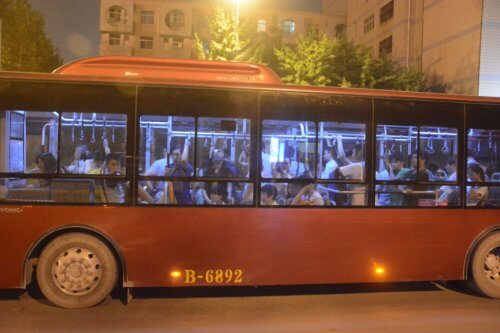
IDTechEx delves into the electric bus market and asks who will take up the slack now that demand in China has fallen
According to independent research provider IDTechEx Research in a new report entitled ‘Electric Buses 2019-2029,’ China is not what it used to be. Electric bike demand collapsed five years ago, and electric bus demand followed two years ago.
With electric buses, the reason was entirely a precipitous drop in government financial support of demand and production, the peak being accentuated by pulling forward to grab subsidies while they were available. In 2020 there will be zero but despite this, in 2027 China plans that full electrification of its bus fleet will be complete. IDTechEx has doubts about that and certainly sees little happening about the one million largely unauthorised buses doing school runs.
Raghu Das, CEO of IDTechEx said: “Until recently, it was uncertain whether the rest of the world would take up the slack of at least 20,000 pure electric buses yearly, because even the RATP commitment in Paris of 800 is not of the right magnitude given that the Chinese used to place orders of up to 2,000 at a time. The biggest city in Europe, London, is way below the Paris figure.”
Maybe as many as 50 countries are doing something. For example, in Wellington, New Zealand, 10 electric double-decker buses were rolled out last July, with a goal of having 32 running by 2021. Operator EBuzz in the Netherlands has ordered 159 electric buses. Solaris of Poland supplied over 100 locally then won a tender for 90 for the German capital Berlin. Brussels Airport has ordered 30, but that is dwarfed by Vietnam. A new non-profit bus service coming to that country next year will introduce at least 3,000 new electric buses.
Long term is another matter. Los Angeles County Metropolitan Transportation Authority (Metro), plans to move its entire bus fleet to zero-emissions models by 2030. This is the second-largest bus fleet in North America after New York with similar long-term ambitions. Los Angeles has 2,472 buses. That aim is contingent on continued improvements in electric bus technology – range, reduction in battery charging times and an increase in battery life cycles – as well as further reductions in price. In 2017, it placed orders for only 105 pure electric buses. Expect London, Los Angeles and New York to be heavy purchasers in 5-10 years.
However, Raghu points us elsewhere for the big story. “For all that, it is in India that the missing 20,000 or more electric buses yearly are likely to be ordered if electric bus demand is to recover globally,” he said. “India has announced energetic moves to replace 150,000 diesel buses and it will add more in order to cope with chronic air pollution. Indeed, India already has more buses than anywhere else. Currently, there are around 1.6 million registered, out of which only 170,000 are operated by public bus operators. Under the FAME (Faster Adoption and Manufacture of Hybrid and Electric Vehicles) scheme, 60% of the bus price is contributed by the central government while the rest is provided by the states.”
The State of Kerala’s electric vehicle (EV) policy envisages introducing one million EVs by 2022, the Chief Minister Pinarayi Vijayan said. He has planned a pilot fleet of 3,000 pure electric buses. Andhra Pradesh has recently announced it is to deploy 350 electric buses in five cities.
BYD, number two in electric buses worldwide and number one in the booming electric car market in China, says it will sell 40,000 pure electric buses worldwide in 2021 and that has to mean a lot of exports. It has made a good start by becoming the leading supplier in Europe and USA. The Chinese and others are allowed to sell in India whereas the figures reveal that the Chinese market for buses is effectively closed to imports.

